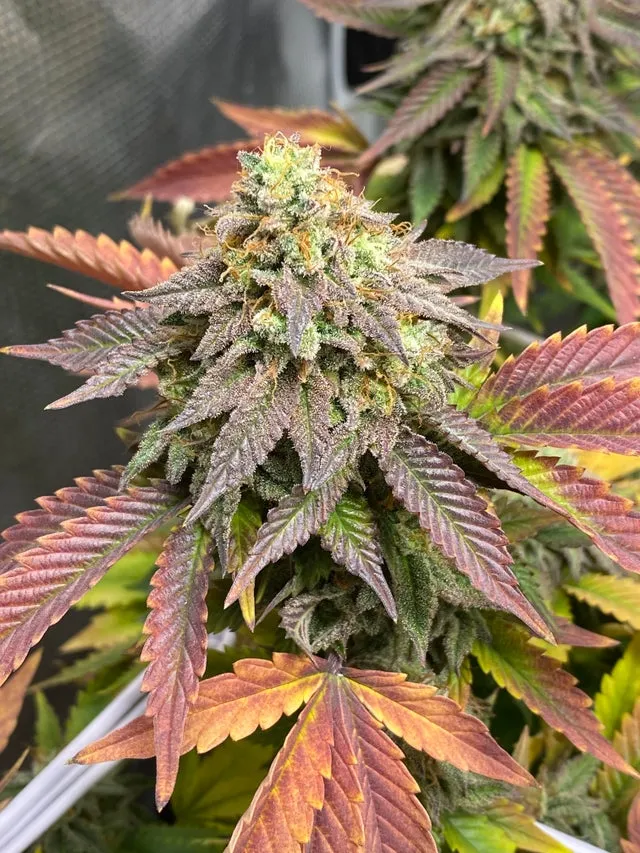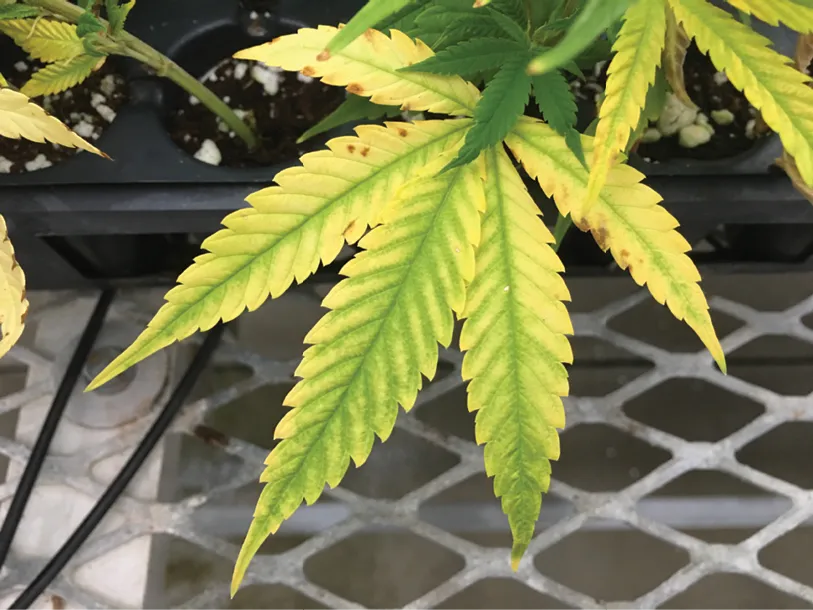Growing Organic Cannabis: Part 8

( Photo Credit: u/dogdadaf0531, Mimosa Evo )
Macro Nutrients
(Quick recap of macro nutrients, before we get into Magnesium)
Macro nutrients are going to make up the bulk of what your plants will consume, and this is going to be the main focus of your efforts to keep your Cannabis well fed as a grower.
A common misconception about the Macro Nutrients is they are N-P-K. They are not.
The macro nutrients are actually N-P-K-Ca-S-Mg:
- Nitrogen (N)
- Phosphorus (P)
- Potassium (K)
- Calcium (Ca)
- Sulfur (S)
- Magnesium (Mg)
In his excellent book "Teaming with Nutrients" Jeff Lowenfels wheels out an important artifact from agricultural history:
Justus Von Liebig, considered by most as the father of modern agricultural science, again contributed to the field in 1863 when he proposed the Law of the Minimum.
It states, “A manure containing several ingredients acts in this wise: The effect of all of them in the soil accommodates itself to that one among them which, in comparison to the wants of the plant, is present in the smallest quantity.”
In other words, plant growth is limited by the least abundant mineral, no matter how abundant the other minerals happen to be.

( Photo Credit: u/phantomf0x_, Blue Dream, day 40 of flower )
Magnesium (Mg)
This crucial element is required for a plant to create chlorophyll. No chlorophyll, no photosynthesis, growth grinds to a halt, plant yellows and dies. Bah. Humbug.
It is important to note that Magnesium needs to be in balance with the other nutrients. Balance simply means the right ratios need to be present, or else it can create an antagonistic situation with nutrient uptake that results in nutrient lockout.
Magnesium uptake is also affected by the presence of other elements. In general, a nutrient balance is obtained by targeting a 4:2:1 ratio of potassium (K) to calcium (Ca) and Mg. This helps avoid antagonisms among these elements. For example, if one element is excessive in the nutrient solution, then that can limit the plant’s ability to uptake adequate levels of the other two nutrients. Antagonistic situations commonly are observed with crops such as tomatoes, in which high levels of Ca are provided to avoid blossom end rot, or with geraniums, in which high levels of dolomitic limestone or flowable lime are added to avoid a substrate pH drop. Elevated levels of Ca limit the uptake of Mg, and these plants often develop deficiency symptoms.
source
Since Magnesium plays a critical role in the production of chlorophyll, one of the symptoms of Magnesium deficiency is a yellowing of the older leaves, but unlike nitrogen a distinct pattern of "intervenal chlorosis" appears.

( Photo Credit: cannabisbusinesstimes.com )
An important note about the properties of Magnesium: this nutrient will be stored in flowers, and when Magnesium is ignited, it burns hot. So you want to get that Magnesium out of the flowers before you chop them down, otherwise this can result in smoke that is harsh/hot. Cannabis needs Magnesium for its entire life cycle, EXCEPT for the last few weeks of flowering, you want to cut off the Magnesium tap to force the plants to use up any residual Magnesium in their container, and in their tissues!
Sources of Magnesium
- Epsom Salt
- Langbeinite
- Dolomite Lime
Epsom Salt
Epsom Salt, also known as Magnesium Sulfate (MgSO4) contains Magnesium and Sulfur. The sulfate (-SO4) is the only form of Sulfur that plants can uptake. This is probably the fastest way to amend your soil if your plants are showing a magnesium deficiency.
Langbeinite
Langbeinite is a naturally occurring mineral that contains high levels of Potassium and moderate levels of Sulfur and Magnesium. This mineral needs to be thoroughly composted to allow soil microorganisms to break this mineral down into plant-friendly formats.
Dolomite Lime
Dolomite Lime is a type of Lime that contains both Calcium and Magnesium. Usually this product is sold in nurseries in a "prilled" or pelletized format for faster absorption into the soil. A quick word of caution about Lime and Dolomite lime, Calcium in these products is a natural "pH UP" element. Calcium will naturally buffer your soil against acidic shocks, but it also raises the pH of the soil, potentially out of the sweet spot of 6.2-6.8 pH, and can make the soil environment resistant to lowering the pH back down. When the plants are in soils that are outside of their sweet spot pH, some nutrients can get locked out, meaning the plant can't absorb them at that pH range, and this can cause a cascade effect if we refer back to Justus Von Liebig's quote at the beginning of this article. In other words, just don't go crazy with this stuff, a light touch means that you can always add more later.
Conclusion
This concludes the section on macro nutrients!
In part 9 we'll discuss the trace nutrients!
If you liked this article, hit that upvote button, subscribe to follow me, and if you're feeling chatty, drop me a line in the comments down below.
Till then, happy toking ya bunch of stoners!